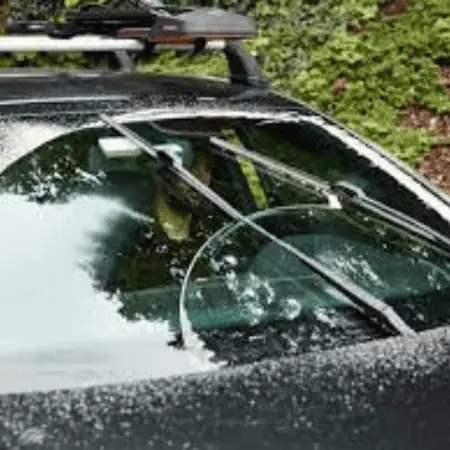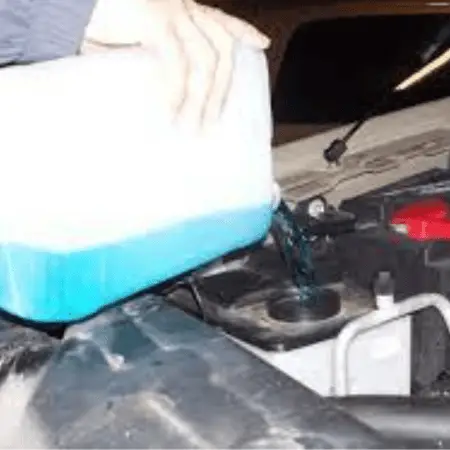Windshield wiper fluid sensors play a crucial role in ensuring clear visibility during adverse weather conditions. These sensors are designed to detect the level of wiper fluid in the reservoir and alert the driver when it’s running low. However, like any other electronic component, they may encounter issues over time, necessitating a reset. In this article, I’ll guide you on How to Reset Windshield Wiper Fluid Sensors. So keep on reading…

Signs of a Malfunctioning Windshield Wiper Fluid Sensor
Before attempting to reset the sensor, it’s essential to identify signs of malfunction. Here are some common indicators:
1. Dashboard Warning Light Stays On:
One of the primary signs of a malfunctioning windshield wiper fluid sensor is when the dashboard warning light indicating low washer fluid remains illuminated, even after you’ve refilled the reservoir.
2. Inaccurate or No Warning Signals:
Another indication of a faulty sensor is when you don’t receive any warning signals despite the windshield washer fluid being low or empty. This can lead to potential visibility issues while driving in adverse weather conditions.
3. Erratic Warning Signals:
Sometimes, a malfunctioning sensor may provide inconsistent or sporadic warning signals, such as the dashboard light flickering or coming on and off randomly. This inconsistency can make it challenging to rely on the sensor to accurately indicate the fluid level.
4. Wipers Operate Poorly:
A malfunctioning windshield wiper fluid sensor can also affect the performance of your wipers. You might notice that the wipers don’t operate smoothly or effectively, which could be due to insufficient fluid reaching the windshield.
5. Fluid Leakage:
If the sensor is damaged or malfunctioning, it may lead to fluid leakage around the sensor area. This can result in visible puddles of washer fluid under the hood of your car, indicating a potential problem with the sensor or its surrounding components.
6. No Response to Reset Attempts:
When attempting to reset the sensor following the vehicle manufacturer’s instructions, if there’s no response or the warning light persists despite resetting, it’s likely a sign of a malfunctioning sensor that may need repair or replacement.
7. Visual Inspection Reveals Damage:
Upon inspecting the sensor visually, you might notice physical damage, such as cracks or breaks, which can impair its functionality. Damage to the sensor housing or wiring could also contribute to its malfunction.
8. Lack of Functionality During Test:
Performing a manual test of the sensor by intentionally depleting the washer fluid and observing for a warning signal can help diagnose its functionality. If the sensor fails to provide a warning when the fluid is low, it indicates a potential malfunction.
9. Unresponsive Reset Button:
Some vehicles feature a reset button near the windshield wiper fluid sensor. If the reset button fails to respond when pressed, it suggests an issue with either the sensor itself or its connection to the vehicle’s electrical system.
10. Persistent Issues After Maintenance:
Suppose you’ve recently refilled the windshield washer fluid reservoir or performed maintenance on the sensor, and the warning light continues to stay on or behave erratically. In that case, it’s likely indicative of an underlying problem with the sensor that requires attention.

Further Reading
- How Do I Stop My Brakes From Squeaking In Reverse? ( 6 Steps )
- Drive Start Control Malfunction – Signs & Causes
- Why Does My RPM Go Up And Down While Parked – 6 Main Causes
How To Reset Windshield Wiper Fluid Sensor
To reset the windshield wiper fluid sensor, following a few simple steps is essential.
1. Locate the Sensor:
Begin by finding the windshield wiper fluid sensor. This sensor is usually located near the windshield washer fluid reservoir in the engine compartment of your vehicle. It’s typically a small device connected to the reservoir or nearby components. Take a moment to inspect the area to identify the sensor visually.
2. Inspect for Damage:
Once you’ve located the sensor, carefully inspect it for any visible signs of damage. Look for cracks, breaks, or loose connections that could affect its functionality. Additionally, check for any debris or obstructions blocking the sensor’s operation. It’s crucial to ensure that the sensor is in good condition before resetting it.
3. Find the Reset Button (if applicable):
Some vehicles have a reset button specifically for the windshield wiper fluid sensor. This button is often located near the sensor itself or within the dashboard controls of the vehicle. Refer to your car’s manual to determine if your vehicle has a reset button and its location.
4. Press and Hold the Reset Button:
If your vehicle has a reset button for the windshield wiper fluid sensor, press and hold it for a few seconds. Press the button firmly with a pen, screwdriver, or finger. Keep holding the button down until you see a confirmation light illuminate on the dashboard or hear a beep from the vehicle. This indicates that the sensor has been successfully reset.
5. Check Dashboard Indicator:
After resetting the sensor, check the dashboard to ensure that the warning light indicating low washer fluid has been turned off. If the light remains illuminated, repeat the reset process or consider other troubleshooting steps.
6. Refill Washer Fluid Reservoir (if needed):
If the windshield washer fluid reservoir is low or empty, refill it with the appropriate windshield washer fluid. Make sure to use the correct type of fluid recommended for your vehicle. Fill the reservoir to the recommended level to prevent future warnings from the sensor.

7. Test Wipers:
To confirm that the sensor reset was successful, test the windshield wipers. Turn them on and observe their operation. Ensure that the wipers are spraying fluid onto the windshield effectively and that they’re functioning correctly without any issues.
After following these steps you can solve this issue effectively.
You May Find Helpful
- Are Ventilated Seats Worth It? Pros & Cons Of Ventilated Seats
- How To Open Hood Of Car With Dead Battery? Step By Step Guide
- How To Remove Too Much Transmission Fluid?
Conclusion
Resetting the windshield wiper fluid sensor involves following the manufacturer’s instructions carefully. This includes visually inspecting the sensor, pressing and holding the reset button (if applicable), refilling the washer fluid reservoir, and testing the wipers. Avoid common mistakes such as rushing through the process or using incorrect washer fluid. Seeking professional assistance may be necessary if issues persist. Overall, proper resetting ensures optimal wiper system functionality and driving safety.
